
In the world of presentations, visuals matter. Whether you're trying to convey a concept or simply keep your audience engaged, the way you present information plays a crucial role in the effectiveness of your presentation. Google Slides offers a range of image editing features that allow you to enhance your visuals and make them stand out. In this post, we’ll walk you through how to apply various effects to your images in Google Slides.
While Google Slides offers a few basic image editing tools, Smallppt's AI-generated slideshow function can further simplify and automate your entire presentation-building process, saving you time and effort.
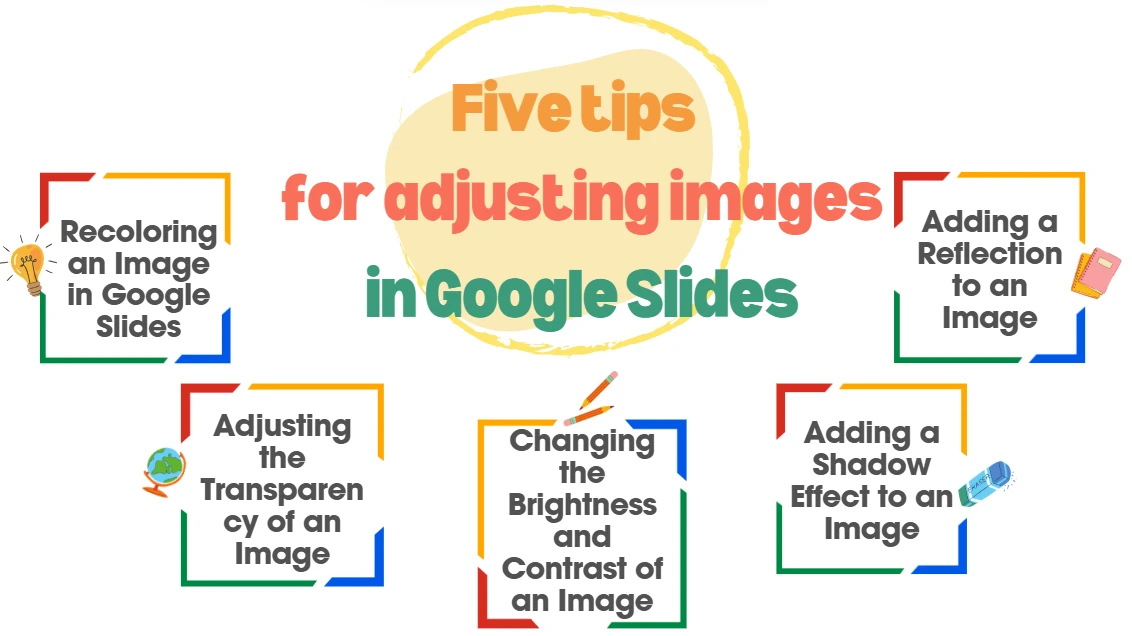
Recoloring an Image in Google Slides
Recoloring an image can dramatically alter its mood and appearance to better align with your presentation’s theme. Whether you want to make the image match the color scheme or give it a more artistic feel, recoloring is an easy yet effective tool.
Here are the three steps to recolor an image in Google Slides:
- Select the image you want to modify in your slide.
- Go to the Formatting options menu in the toolbar.
- Open the Color change tab.
From here, you can choose from a variety of preset colors. To return to the original colors, select “No recolor”.
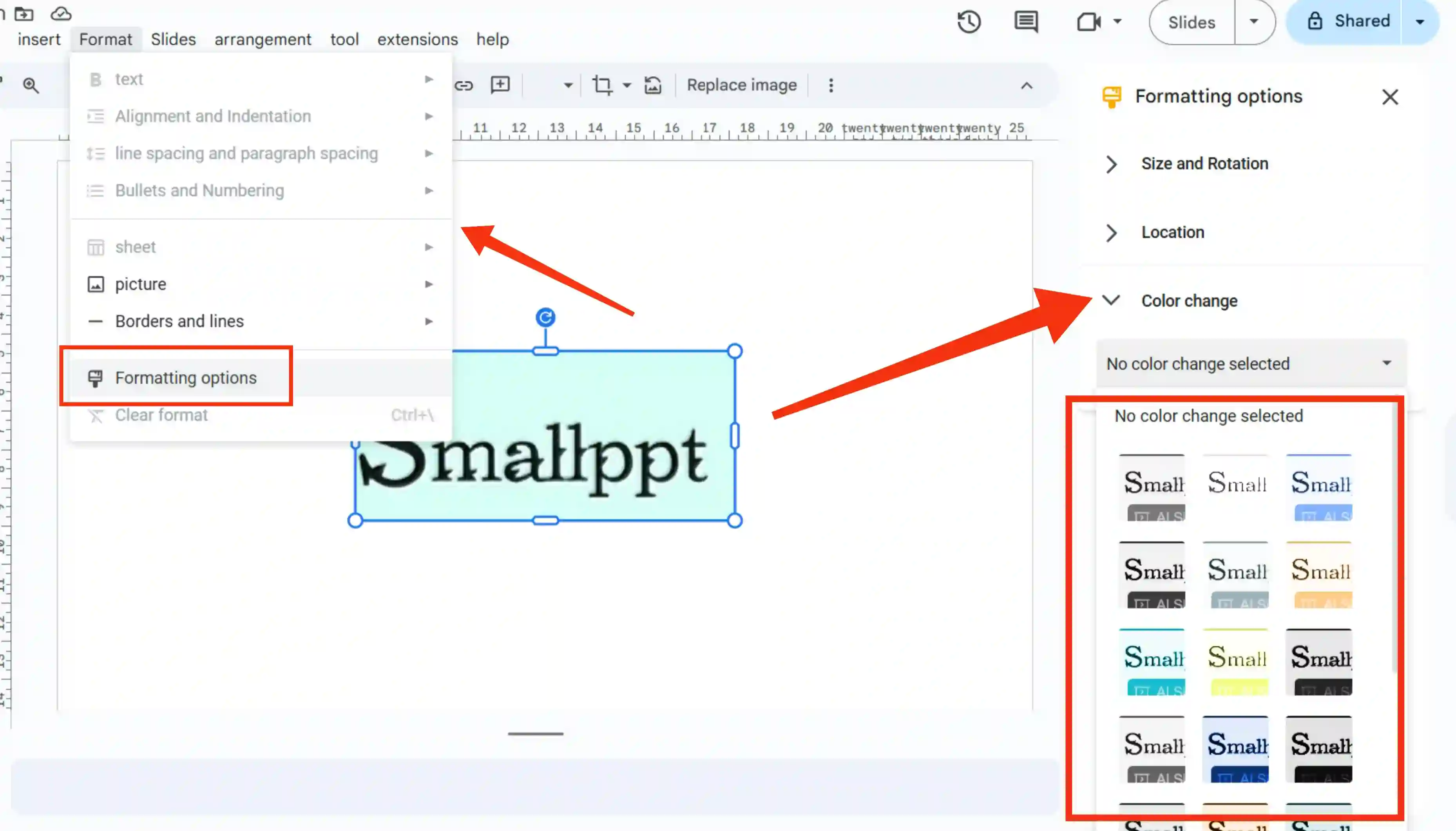
By adjusting the color, you can easily match the image with your overall design theme, whether you're creating a corporate pitch deck or a more casual school project.
Adjusting the Transparency of an Image
Transparency effects allow you to make an image less dominant in the background or blend it seamlessly with text and other elements. By changing the opacity for an image, you can use visuals more flexibly without overshadowing the main content.
Steps to change the opacity for an image:
- Select the image in your slide.
- Go to the Formatting options and open the Adjustments tab.
- Drag the Transparency slider to adjust the visibility of the image.
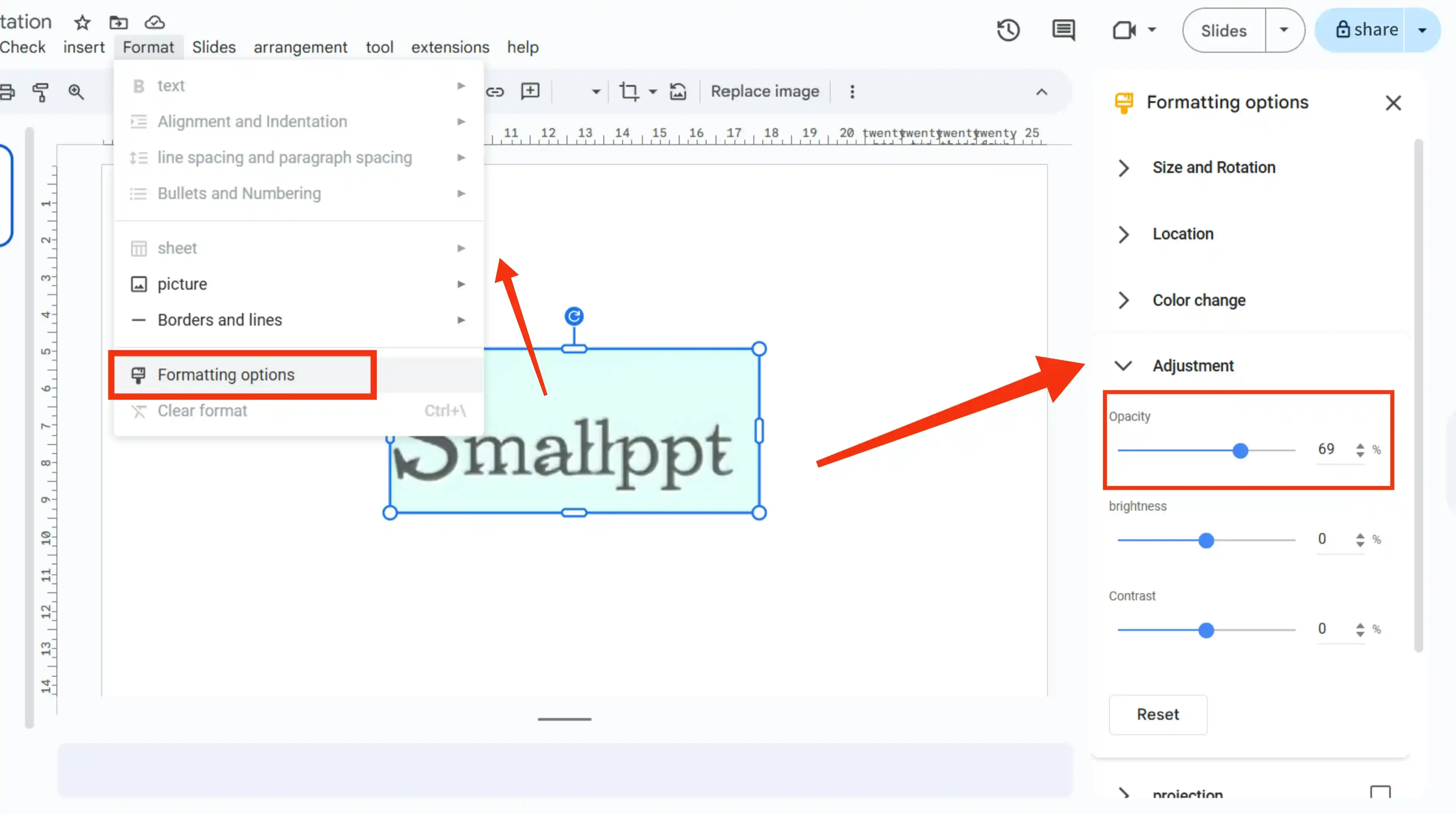
A subtle adjustment to transparency can make a big difference, especially if you want the image to serve as a background without distracting from the main content.
Changing the Brightness and Contrast of an Image
If you want to make the image clearer and more vibrant, you can adjust the brightness and contrast, or make it softer depending on your desired effect.
Steps to change the brightness and contrast:
- Select the image you wish to modify.
- Go to the Formatting options and open the Adjustments tab.
- Use the Brightness and Contrast sliders to adjust the image to your liking.
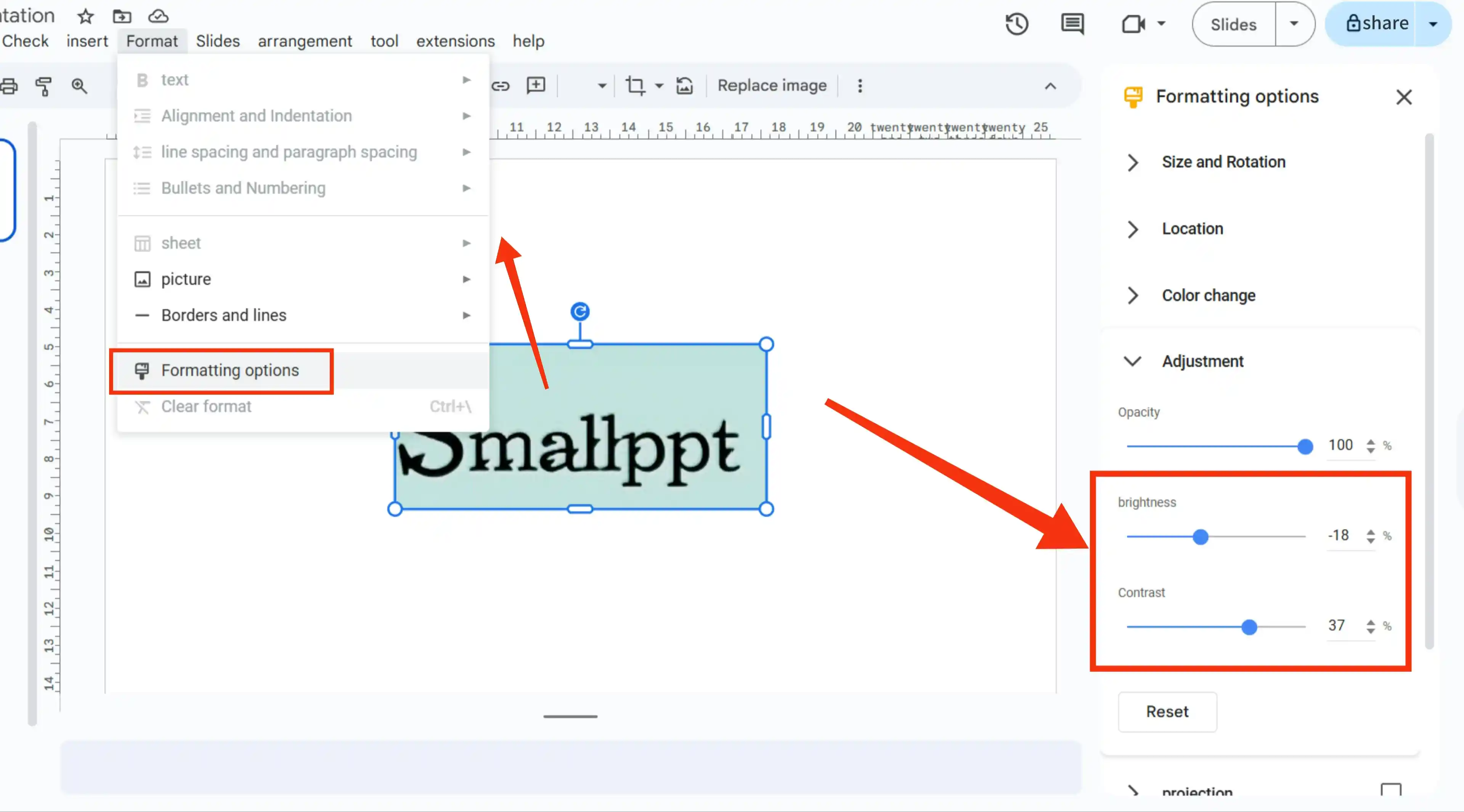
This feature can be especially useful if your image looks too dark or washed out. By adjusting brightness and contrast, you can make the image as striking as your content.
Adding a Shadow Effect to an Image
Adding a drop shadow to an image creates depth and draws attention to the image itself. This is especially useful for giving a 3D effect to your visuals, making them stand out more clearly from the background.
Here are the three steps to add a shadow to an image:
- Select the image.
- Open the Formatting options and check the box next to Projection.
- Adjust the shadow settings:
- Color
- Transparency
- Angle
- Distance
- Blur radius
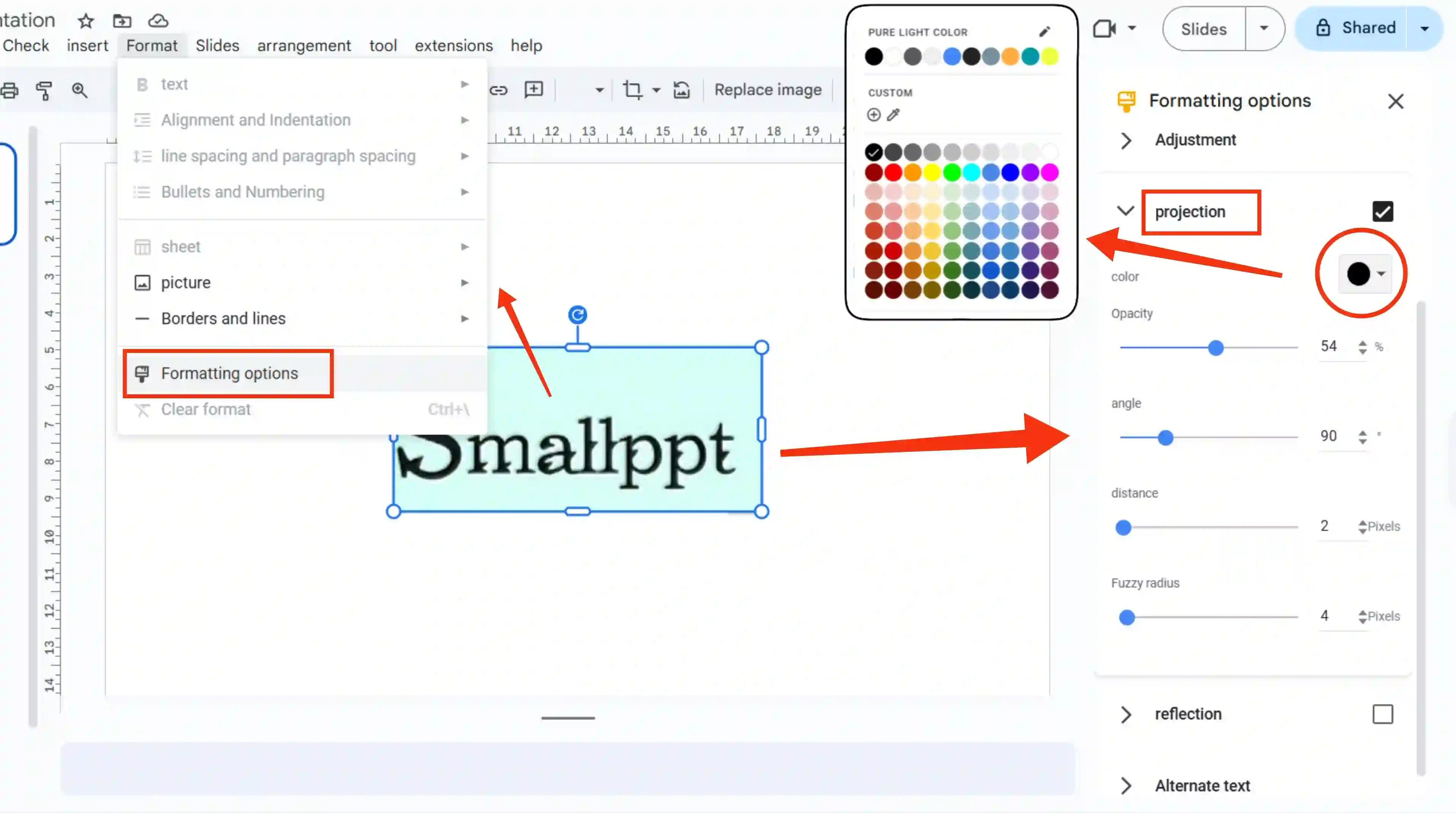
Adding a Reflection to an Image
The reflective effect can give your image a sleek, modern aesthetic. This effect works particularly well for images where you want to create a mirrored or water-like effect beneath your photo or graphic.
Three steps to add a reflection:
- Select the image in your Google Slide.
- Go to the Formatting options and check the box next to Reflection.
- Adjust the following reflection settings:
- Transparency
- Distance
- Size
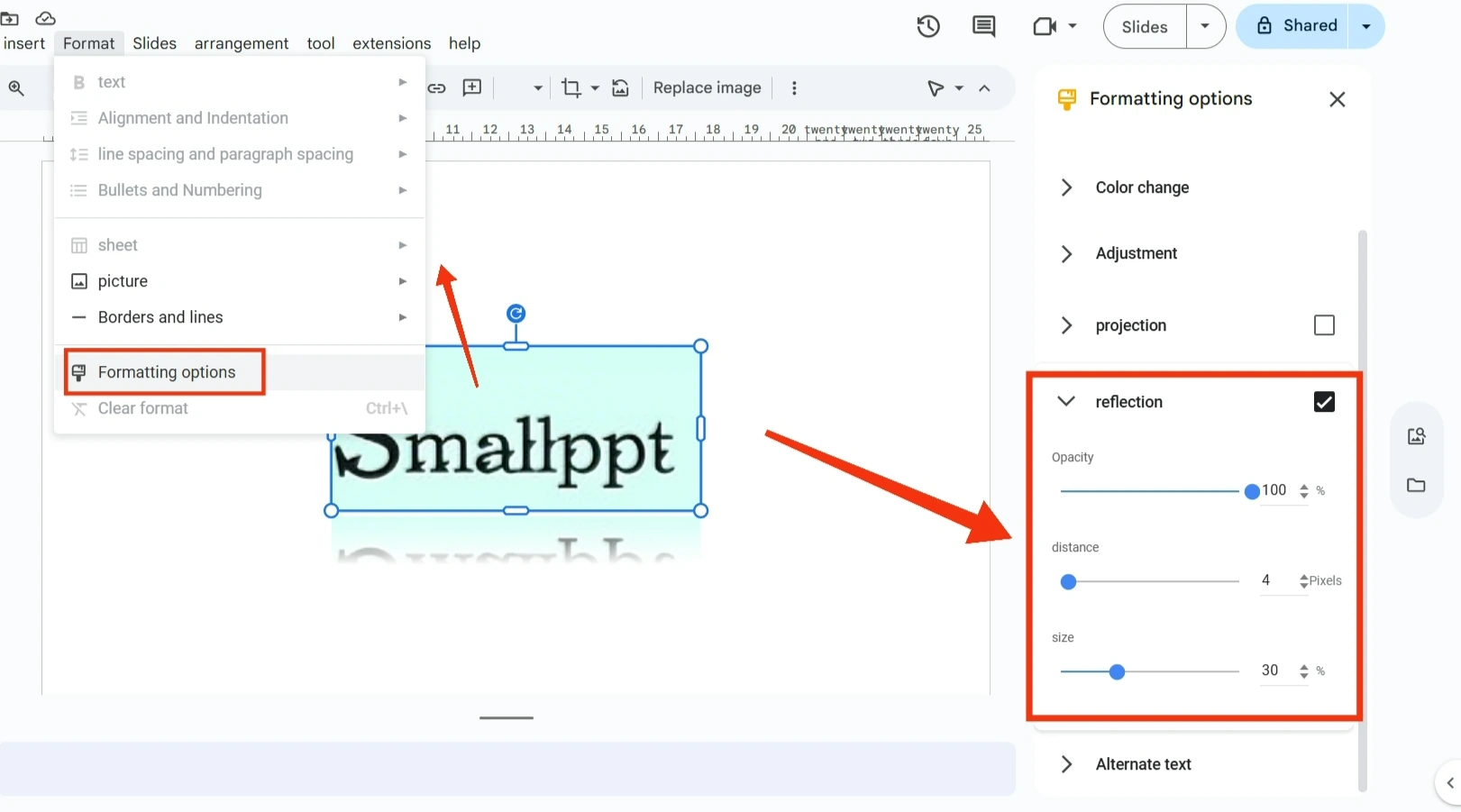
Why These Effects Matter
Images with added effects can take your presentation from basic to professional in a matter of seconds. The right adjustments can help you highlight your key messages, provide visual clarity, and make your slides more appealing. By adding recoloring an image, shadows, reflections, and other effects, you can create a cohesive, visually captivating experience for your audience.
Enhancing images in Google Slides is an easy way to elevate your presentation and make it visually captivating. If you want to create stunning presentations more easily, Smallppt can automatically complete many optimization tasks, saving you time while ensuring a professional finish.
Try it out and see how your presentations can effortlessly go from good to great!
How Smallppt Can Enhance Your Google Slides Experience
While Google Slides provides you with basic image editing tools, Smallppt's AI-powered slides take presentation design to the next level. With powerful AI-driven features, Smallppt can automatically generate professional-grade slides, analyze your content, and optimize it in real time, offering a wide range of templates, unified formatting, and ensuring that the visual style aligns perfectly with the presentation theme.For example, this classic blue and white color scheme slideshow.
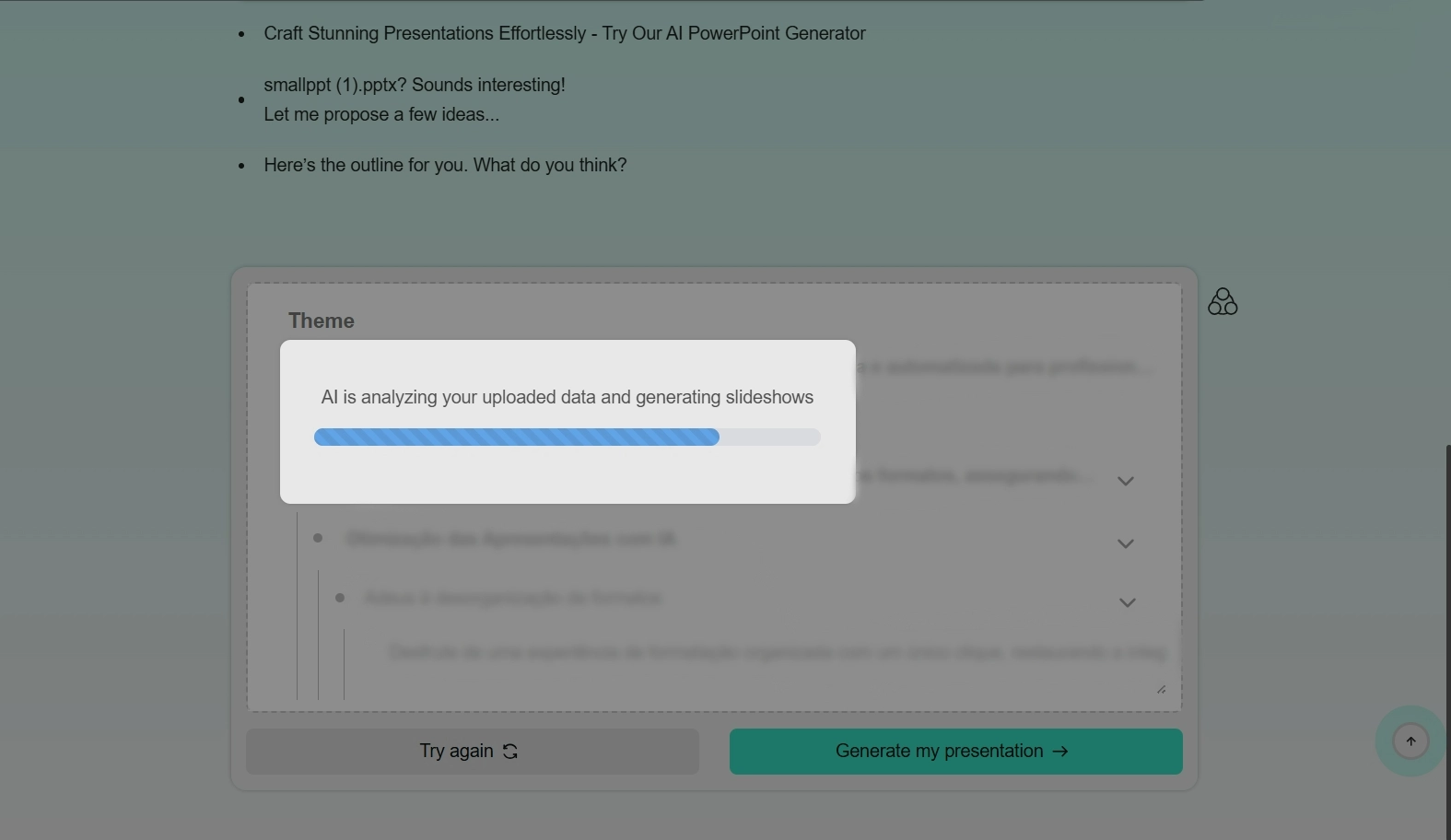
Learning how to use AI can save you a lot of time while ensuring your images are not only visually appealing but also optimized for maximum impact.
Whether you're working on a business proposal, a marketing presentation, or a school project, AI can streamline your workflow, making your design process more efficient and easier.
FAQ: Google Slides Image Editing
Q1. How can I quickly find image editing features in Google Slides?
After selecting the image, click on the Formatting options in the toolbar. All color changes, transparency, shadows, and other features are conveniently located in this menu, so there is no need for extra searching.
Q2. How can I restore an image to its original colors after recoloring?
In the Formatting options, Color change, simply select No recolor, and your image’s original colors will be restored with one click.
Q3. When adjusting shadow and reflection effects, how can I make the visuals look more natural?
For shadows, we recommend setting “Transparency to 30% to 50%, Blur radius to 5 to 10, Distance to 5 to 10”.
For reflections, try “Transparency to 60% to 80%, Size to 80% to 90%”.
Q4. Can Smallppt optimize the images in Google Slides?
Yes. Smallppt supports importing slide files, and after import, the AI will analyze the content. Once you select a preferred template, it will quickly match and unify the theme style.
Q5. For business presentations and school projects, which image effects should be prioritized?
For business presentations: Use recoloring and slight shadows to align with your company’s image.
For school projects: Opt for opacity overlays and reflections for a lively, modern look.


